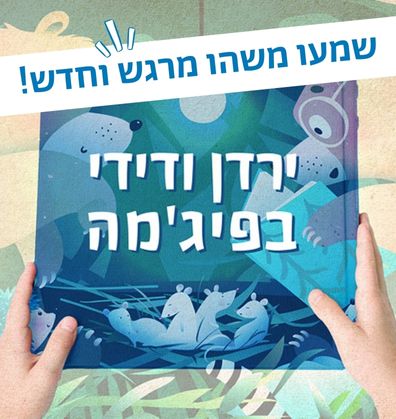כִּשּׁוּרֵי חַיִּים
משחק
ילדים אוהבים לשחק והם עוסקים בכך בחלק משמעותי מהיום. דגדוגים או מחבואים או כל משחק אחר הם לא רק דרך ליהנות או להשתעשע, אלא גם אמצעי לחקור וללמוד את העולם, לגבש את הזהות ואת תחומי העניין, לתרגל מיומנויות רבות בכל היבט התפתחותי ולעבד חוויות שונות. לפניכם ספרים "משחקיים" וספרים על משחק, שיעוררו עניין והשראה לזמנים משותפים של הזדהות, של הנאה ושל היכרות עם העולם.
סְּפָרִים
Book-Related Family Activities
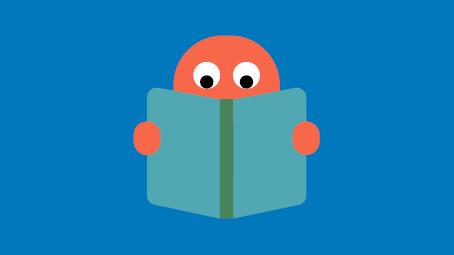
Family Reading Advice
Getting ready for Purim: Toddlers are introduced to holidays and traditions early on in life. This book touches on the custom of dressing up for Purim which can make various feelings surface. With the help of this story, we can familiarize ourselves with this custom, visualize the Purim party at daycare, and discuss it. Doing so in advance may evoke curiosity and excitement, lessen concerns, and help toddlers be better prepared.

Discussion – Family Costumes
You can look at photographs together – pictures of your toddlers and other family members from previous Purim celebrations – to be reminded of and share childhood stories. You can ask questions such as: What makes costumes special? What sets them apart from our regular clothes? How do we feel when we dress up?

Who is at the Party?
Look at the party illustration together in which all the children are dancing around in a circle. You can point at the various characters (“Here’s a strawberry”) and describe them, while noting at which station they had boarded the bus. During re-readings, you can notice whether the costumes have any special accessories and look for other interesting details.
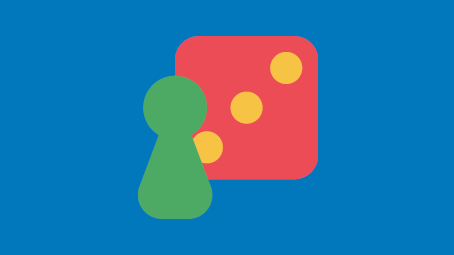
Family Bus
You can play together – taking turns being the driver and picking up “passengers”, whether they be family members, stuffed animals and dolls, and other items from various “stations” around your home. And what should you do once you get to your final destination? You can disembark and throw a dance party!
QR Code
You’re welcome to dress up and dance to Levin Kipnis’s well-loved song (Music by Nahum Nardi, performed by Dudu Zakai)

Family Reading Advice
Before turning the page, you can try to guess what will happen on the next page. You can pause on each page, take a closer look at the illustrations, and evoke the toddlers’ curiosity. An illustration-based book contributes to the development of attention to details and the beginnings of creativity.

Discussion – Comparing and Contrasting
You can discuss the things that are common to all members of your family as well as those that are unique to each – for example, which of you wear glasses? Which of you like to eat cucumbers? Which of you go to work in the morning and which of you go to daycare?

Not Like the Others
Arrange three similar items and one dissimilar item in a row, and invite the toddlers to tell you which one is not like the others. When they do, reverse your roles. You can gradually make things more difficult – for instance, start with three toy cars and a ball, and build up to three forks and a spoon.

All Together Now
A mix of all the characters in this book appears on its final page. You can look at it together, emphasizing various details of this illustration, such as “Here are the cows”, or “I see a spaceship”, and inviting the children to point them out or name them.
QR Code
Scan the QR code to discover how shared reading contributes to toddlers’ brain development.

Arts & crafts, songs, and other activities can be found on the Sifriyat Pijama Pinterest page.

Family Reading Advice
Discovering books at our own pace:
Toddlers connect to books by touching them, opening and closing them, playing, looking at the illustrations, and so on. Some will listen to the entire story, while others prefer to start with a single page and gradually get used to reading more at their own pace. You can pateintly read a little more every day until, little-by-little, books become friends!

Discussion – The Sounds of my Neighborhood
You can imagine what is going on in your neighborhood or down the street right now and talk about it: What can we hear from outside? What are the children in nearby houses saying right now? What kinds of sounds are the animals making?

Musical Reading
You can add various musical instruments to your reading, or improvise using household items such as a pot and wooden spoon.

Composing Tunes
Try to come up with your very own family tune – each of you can contribute a sound to your shared melody. You can then repeat it over and over again, faster or slower, louder or quieter. Great fun is guaranteed!

Looking at the Illustrations – The Secret of Small Details
This book contains unique and interesting illustrations. You can focus on a page at a time – describing the characters, looking for the instruments and animals, while discovering more and more details.

Arts & crafts, songs, and other activities can be found on the Sifriyat Pijama Pinterest page.

טיפ לקריאה משפחתית
אפשר להפוך את הקריאה לזמן איכות משפחתי. הַזמינו בני משפחה לשעת סיפור משפחתית וחמימה ואם תרצו – צרפו ילדים נוספים. כל אחד מהמשתתפים יקבל תפקיד: אחת תבחר את הסיפור, אחר יעביר עמודים, אחת תכין תה ואחר יגיש כיבוד, ויחד תחוו רגעים של חיבור והנאה.

מיריק שניר
מיריק שְׂניר, ילידת 1948, היא משוררת וסופרת ילדים אהובה ועטורת פרסים שכתבה עד כה יותר ממאה ספרי ילדים ופעוטות. כתיבתה הייחודית הופכת חוויות ילדות יומיומיות לקלאסיקות ישראליות המלוות ילדים רבים לאורך שנים.

קריאה ומשחק דמיון
משחקי דמיון מפתחים את יכולתם השפתית של פעוטות ומעודדים אותם ליצור חוויות ממעשים פשוטים ויומיומיים. בעקבות הסיפור תוכלו לשחק יחד, להקריא סיפור לבובה העייפה ואולי להפוך את השמיכה או את הכריות לאוהל.
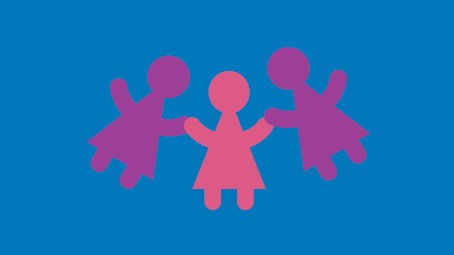
בית מקופסה
גם אתם יכולים להכין בית מקופסת קרטון. כדאי לשתף את הפעוטות ולשאול: מה עושים בבית? מה חשוב שיהיה בו? אם הבית שהכנתם מספיק גדול, תוכלו אפילו לשבת בו ולקרוא סיפור.

סיפור בתנועה
בסיפור משובצים פעלים רבים המדגישים את העשייה המשותפת של הילדים. תוכלו להשתעשע ולקרוא את הסיפור תוך עשיית פעולות “בכאילו” באמצעות תנועה המדגימה כל פעולה, למשל לפתוח את הדלת, לפרושׂ שטיח או לשתול פרחים, ולאפשר לפעוטות לחקות את התנועות שלכם.


טיפ לקריאה
שעת סיפור קבועה עוזרת לפעוטות לחוש ביטחון ויציבות ומספקת הנאה משפחתית מהקריאה המשותפת. איך משלבים קריאה בתוך שגרת היום? בוחרים זמן קבוע ומקום נעים ונוח. אפשר ליצור “טקס” קטן סביב הקריאה – להביא יחד את הספר, להשמיע שיר, או לומר משפט כמו: “איזה כיף, איזו שמחה, שעת הספר מתחילה!”

כל עמוד – עולם ומלואו
מבנה הספר מאפשר להשתהות ולהעמיק בכל עמוד בנפרד. אפשר לקרוא שוב ושוב את העמוד ולהדגיש את המילה המרכזית, להתבונן באיור, לראות מה מסקרן את הפעוטות ולהגיד למשל: “הילדה דורכת על העלים והם משמיעים רשרוש”.

התנועה שבמילים
תוכלו להוסיף למילים תנועה – למשל נשיפה עדינה על המצח של הפעוט שממחישה את התלתל שעף ברוח, תנועה מעגלית עם האצבע כמו הגלגול, הקשה קלה עם האצבעות על הספר כמו הטפטוף של הגשם וכמובן דגדוג!

כמו בספר!
את המילים שבספר אפשר לחפש גם בבית ובסביבה. תוכלו לומר: מה עוד מרשרש? בואו ונשמע דברים מרשרשים. ומה מצלצל? נצלצל בפעמון הבית. למי יש תלתל על המצח או על הראש? בואו נתנדנד על הנדנדה כמו בספר – נד-נד, עלה ורד!
Tip for Family Reading
Read calmly and patiently: Before reading, it is best to select an appropriate spot, and set up the area so your toddler can best listen and focus. A television playing in the background or mobile phone makes it harder for toddlers to concentrate. A quiet, calm, and pleasant setting will provide you and your child with quality time, bonding and fun.

Participatory Reading
After reading a book several times, toddlers will know it and be able to actively participate in reading it. You should read slowly, and, after reading the phrase on the righthand side, invite toddlers to reply: “I can do it!” while trying to copy the movement to the best of their ability.

I Can Do Anything!
You can encourage your toddler to feel capable by asking questions inspired by this book – “I can take my handbag to work – can you take your backpack to daycare?” And what about the things that toddlers cannot do yet? Well, they will be able to do them sometime in the future after they practice them in a setting that encourages curiosity and experimenting.

Look How I’ve Grown!
You can measure your toddler’s height and make a chart where you record it each time., Alongside their height, you can write down things that your toddler can do with hiss/her body. Each time you measure their height, you can remind your toddler what they can now do, and which new things they learned. When they will grow up, they will have a wonderful memento.

Arts & crafts, songs, and other activities can be found on the Sifriyat Pijama Pinterest page.

Tips for Family Reading
Reading books from an early age contributes to toddlers’ development. We suggest starting slowly and gradually, however best suits your own toddler: Some may choose to begin by touching the book, opening and closing it, or even “tasting” it. You can start by reading one page, getting used to it, and adding more pages, until the book becomes a friend!
Datia Ben Dor (1944) made Aliyah from Egypt when she was 18 months old. Her professional career began in musical education. She wrote screenplays and songs for many Israeli preschool television shows, such as Parpar Nechmad [Lovely Butterfly] and Rehov Sumsum (the Israeli version of Sesame Street). Among her well-known and loved toddler and children’s books are: Ani Tamid Nishar Ani [I Am Always Me], Otiyot Mefatpetot [Chatty Alphabet], and Sefer HaShtuzim [A Book of Silly Rhymes]. Ben Dor has been awarded numerous prizes for her contribution to Israeli children’s literature.

Looking at the Illustrations
Looking at the illustrations in a book can contribute to toddlers’ verbal development. You should look at an illustration together and describe it. For example: “Here’s a balloon, the balloon is round, the balloon floats upwards”, thereby enriching the toddlers’ vocabulary.

Fun for the Entire Family
Alongside each poem is a suggestion for a one-on-one activity. You can adapt it to include more members of your family or friends. For instance, in the poem Shtey Neshikot [Two Kisses], you can give every member of your household two kisses and a hug. In the poem entitled Akhbar [Mouse], you can pretend to be the black cat by bending your fingers to form “ears” and having everyone run and hide around the room while reading “Ratz, ratz, ratz ve… hop! Nichnas LaHor” [“Runs, runs, runs, and… hop! Goes into the hole”]

From Book to lLife
You can incorporate poems or phrases from books into your daily routine. For instance, when toddlers refuse to do something, you can respond by saying: “You don’t want to do this just like the tortoise didn’t want to?” or watch a butterfly together while reciting the poem “Ba elay parpar nechmad vetiyyel li al hayad” [Lovely butterfly came round and take a walk on my hand”].
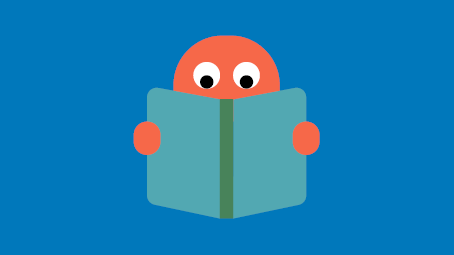
Family reading advice
Books that describe familiar experiences in children’s lives are an opportunity for a glimpse into their world. While reading, you should pay attention to what the children notice most, the questions they ask, and the characters with which they identify. Sometimes, books make it easier to discuss things that happen in real life.

Discussion – Joining the game
Discuss with and ask the children: how do you think Birt felt when Shu joined their game? Have you ever played with a friend and had another person ask to join in? Have you ever asked to join other children?

Arts & crafts with friends
Good friends can make a simple box into a palace, boat, or spaceship. You can suggest inviting one or several friends over for some joint arts & crafts time. Perhaps they will discover what else a box can turn into – with a little imagination, a pair of scissors, some markers, but most importantly – lots of togetherness.

Now Birt, then Shu, then Etho
Playacting is a great way of learning about the experience of others while expressing feelings and sensations. You can act this story out with the help of various family members or toys. Take turns playing each role, so that you can experience the story from the different characters’ perspectives.
Pesach trivia
What are the three things you would have taken with you when leaving Egypt? And who can leap like a frog from the second plague? Scan the code and you will be able to print out an amusing card game that will enhance your Seder Night experience.
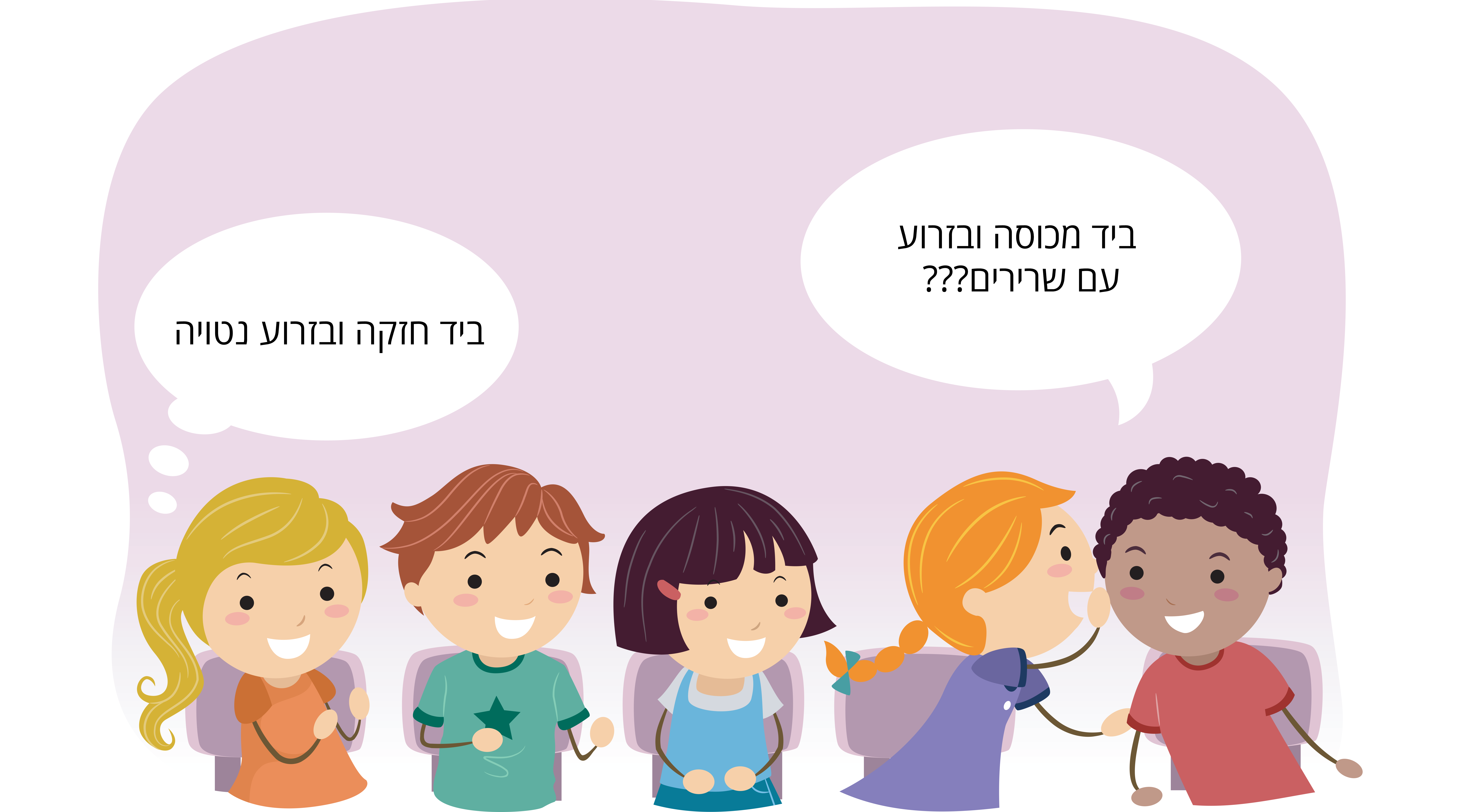
Hide and Seek
You can hide the afikomen or any small item and ask family members to look for it. Is it in the kitchen? Under the couch? Perhaps in the closet? In the next round, the one who found the item will hide an item of his or her choice, while the others go looking for it… Good luck!
Pesach activities
This book offers parents the opportunity to tell their children about their childhood Seder Night experiences: Did you hide the afikomen? And who found it? What did you like about Pesach as children? And what do you like about it now – parents and children?
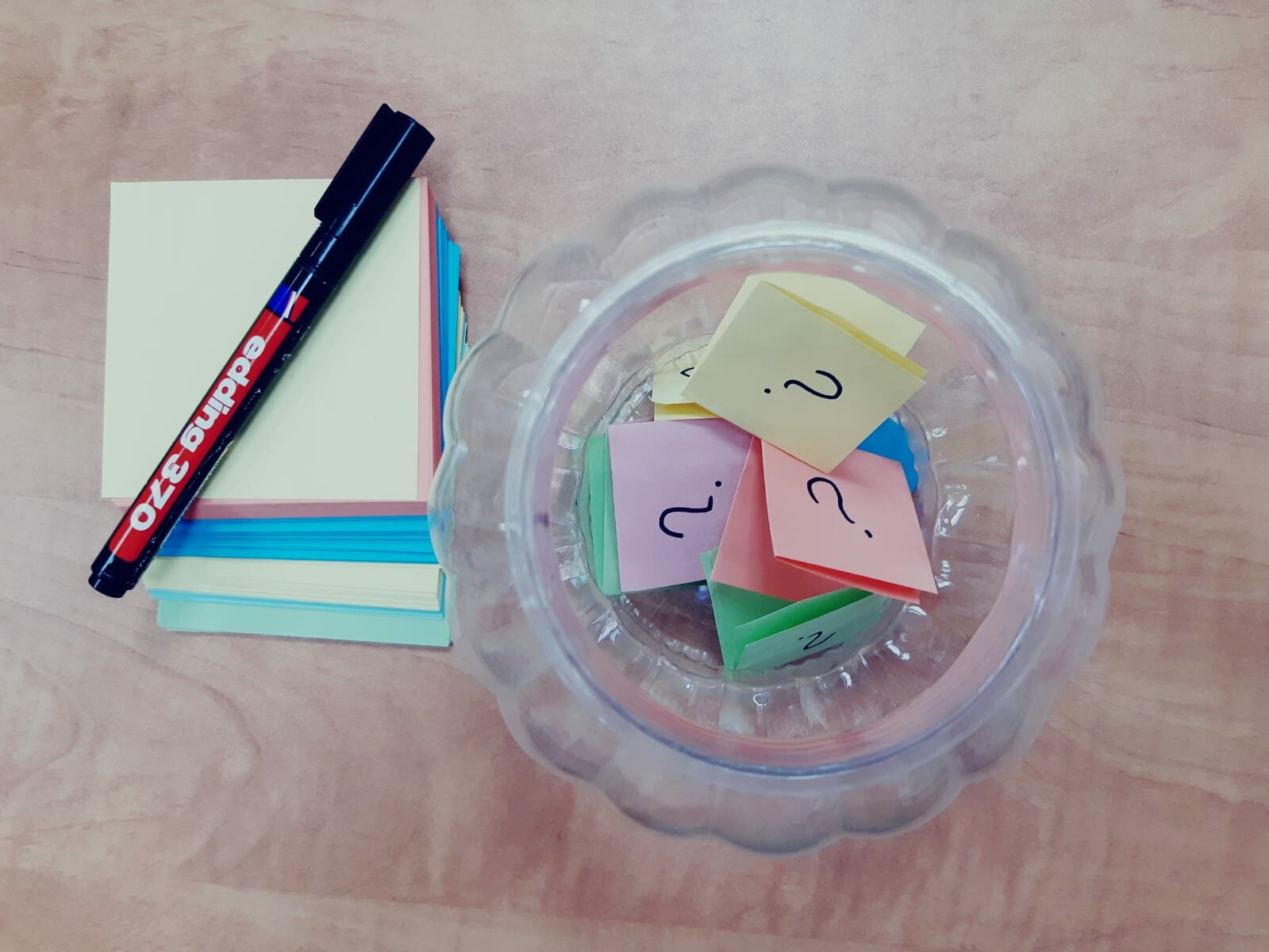
Where is the frog?
A small frog is visiting for Seder Night wearing an ancient Egyptian headdress. Can you look through the illustrations and find it? Why does it appear in the illustrations, in your opinion?

Reading-assisting touch
Toddlers need physical contact. That is why you should sit close to one another while reading, hug, touch, and look into each other’s eyes every once in a while. That way your toddlers will experience story time as a warm and relaxing activity that makes them feel loved and safe.

Tickles and games
You can ask your toddlers – do you like tickling games? Which of the games that we play together do you enjoy? What would you have liked us to play? In relation to the mother’s telephone call in this book, you can also ask – how did Gan-Yah feel when her mother went to answer her phone? How do you feel when you have to wait?
There’s a hill in this house
You can play the same game they play in the book: Your toddler or another family member can hide under a blanket and become a hill. You can tickle the hill, feel it and search – where’s the hill’s foot? Where is its head?
*Some children are hypersensitive to touch or tickles, and therefore, it is important to remind players before the game that one can say “stop” at any point, just like they do in the book.

Moving together
There are many body movements in this book. You too can jump, dance, roll or lift your legs up in the air just like the hill does. You can look at the illustrations and copy Gan-Yah’s movements too.

For more ideas for activities, check out our Instagram page and discover more surprises.

Family reading advice
Children identify with the characters in the book, and acquire a better understanding of others who are different from them, thereby developing empathy and adaptability to new situations. While reading, you can focus on the characters’ facial expressions and ask: How do you think they feel? And why?

Discussion
You can discuss and ask: With whom and what do you like to play? In your opinion, what should we do when we each want to play a different game? What solutions can we suggest?
Annoying but also fun
Libby wants to join Pupik on his visit to the fire station, but he is annoyed – can a solution be found? Watch the video to find out!

Moving with the illustrations
Sitting, jumping, or perhaps bending down? Take turns choosing a page in the book, and showing the others a movement or posture similar to that of the characters depicted in the book. The other players can then imitate the movement, and look for it in the right page in the book. Did you find it? Then it is now time for the next player to choose a page.

The game of games
On separate notes, write down the games you like to play together: Hide-and-seek or maybe catch? Put all the notes in a box and choose one at random each day. What does it say? Would you like to play this game together? If not, you can always take another note out of the box or add a new note suggesting a new game.
Playing Hide and Seek
Let’s play hide and seek! We can hide our fingers in the palm of our hands, cover our nose and reveal it, hole up under a blanket, conceal ourselves behind the couch, or hide a toy behind our backs.
Who wants to go first?
Seek Out the Cat
Meow! The grey kitten has joined our game of hide and seek. You can search for it every illustration, just be careful not to step on its tail…
Some Reading Advice: How to Turn Books into Friends?
Reading from an early age plays a key role in toddler development; however, like anything new, the question is – how do we find the way? We suggest getting acquainted slowly and gradually; let the toddler connect to the book in their own way: Touching, opening and closing, and even “tasting” it with their mouths. Afterwards, you can read: A little each day, patiently and with pleasure. At first you could even read a single page, introducing it and getting accustomed to it, and hey presto – you have turned a book into a friend!
Sifriyat Pijama an opportunity to read together, at any age
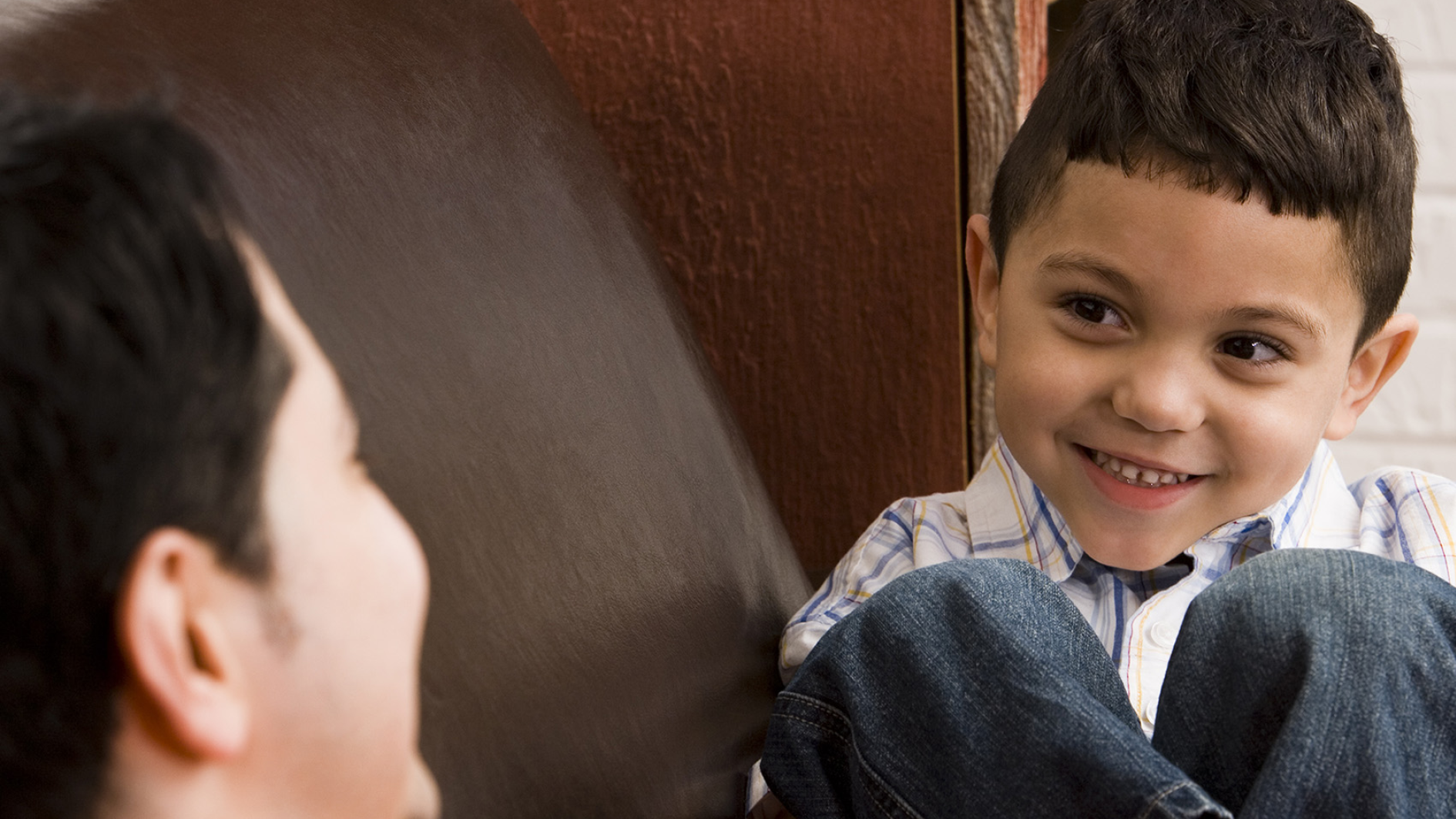
Discussion – With someone and on my own
What can we do on our own? What’s better done together? You may want to discuss the things we can do with others with your child, and then come up with the things that they can do themselves. Who do they enjoy sharing experiences with? Family members? Friends? Perhaps their pet?

A game – On one foot
Can you also stand on one foot? Let’s check!
Throw a die, stand on one foot and count to the number shown on the die: One, two, and… Are you about to fall? Reach out and allow whoever is next to you to help you stay upright.

Cooperation
You may enjoy putting a list together of all the activities that are best done together, in collaboration with someone: Tidying up your room, making dinner, or reading your favorite book. Then, take some cards, write each activity down on a separate one, and decorate it. You could keep all the cards in a special box, pick one out every day, and ask: How about cooperating today and sweeping the house? Why don’t we engage in a family game of catch? Or how about joining forces in some other activity?
Movement – On one foot or two
You may want to assemble a movement course at home, and complete it on one foot, two feet, all fours, or perhaps even three… Design a track on the floor using skipping rope, and take turns completing it in a different way each time: Hopping on one leg, while keeping a cushion balanced on top of your head, crawling, in pairs, with your arms crossed, because it’s easier to jump on one foot in pairs.

Pinterest – Movement games, collaborations, arts & crafts and songs are on the On One Foot page on the PJLibrary Pinterest.ּ
Proposed Family Activities:
- You may want to look at the illustrations together, and suggest that your child describe what the chairs turn into throughout the book.
- While reading the story, you may want to pause before the children reach one of the stops, and ask your child to guess, based on the rhyming scheme – where the children will end up.
- Have you ever visited the cities mentioned in the book? Perhaps you could look at the illustrations, and use them to describe the special features in each of the locations. You could also look for more images of these sites online, and compare them with the illustrations in this book.
- Like the children in the story, you could also let your imagination run wild, and transform the chairs around your home into different things. A chair covered with a blanket could become a tent, or a secret cave.
- You could go on a trip nearby. Choose your destination with your child, pack some snacks, invite some friends, and go on an afternoon excursion. You could even have a picnic, so that “by the time you get off the cloud, lunch will be ready”.
- Where is Tel Aviv? And where is Jerusalem? Where are the mountains, the Sea of Galilee, the Mediterranean, and the Red Sea? Perhaps you could open a map together, and mark the places where you and your extended family live, places you have visited, and places you would like to visit as a family.
האזינו לסיפור המדינה של ילדי הגן
אנו מזמינים אתכם/ן להאזין לסיפור “המדינה של ילדי הגן”, מאת: אמונה אלון | איורים: מנחם הלברשטט | הוצאת: ידיעות ספרים (גנים)
יוצרים ומגישים – ירדן בר כוכבא – הלפרין ודידי שחר
מוזיקה ונגינה – טל בלכרוביץ’
פתיח – דידי שחר
מגישים – יובל סגל, אפרת אביב ותומר שרון.
אקורדיון וחלילים – סלעית להב
מוכנים/ות? מת – חי – לים!

Family Activities
Menachem Halberstadt’s wonderful illustrations speak to the adults reading the story as well as the children, and hint at well-known historical personae and experiences. Even the teddy bear is wearing a hat from the days of the Palmach! Look closely at the illustrations together with your child and share the country’s history with them. See if you can find pictures depicting Theodore Herzl, David Ben Gurion, and dancing the hora in the streets of Tel Aviv.
Adi points to some pictures of famous photographs depicting stories of immigrants. Ask your child to show you these pictures and try to guess from which countries the different immigrants came. You can take out an atlas or map of the world, and look for the places where your family lived throughout the generations and where you have relatives outside Israel today.
The children in the story act out an imaginary version of “building the country”, which initiated in the make-believe corner of the kindergarten. Your child can also dress up in costume and choose a task in building the country.
You too can “build a country”. Let your imagination run wild: How will you call your country? Who will live in it? Which buildings are needed? Will it have a flag? You are invited to send us a photograph of the country you created, and we’ll post the picture on the Sifriyat Pijama website pj.crunchcart.com .
It is not always easy to join in to an existing group and find your role in it. The story can provide an opportunity for you and your child to discuss the emotions of the characters in the book, and for you to share with them your own life experiences – in your personal life, and on the national level.
The building of the State of Israel is a process that has not come to an end, and more new immigrants are likely to join the country in the future. David, the new oleh in the story, brings a toy plane with him to the game. What would you propose new immigrants bring with them to continue building and improving the state?
A number of well-known songs greet new olim as they arrive in Israel. You can organize a sing-along one evening in your home and sing such favorites as “Heveinu shalom aleichem”, “Am Yisrael Chai”, and “Hineh ma tov u ma na’im”.
Haya Shenhav
Haya Shenhav is a poet and author born in 1936 in Kefar Yehoshua, in the Jezreel Valley. Her first children’s book, Mitz Petel (“Raspberry Juice”), was published in 1970, and is a huge favorite among children to this day. Among her well-known and much loved works are Aliza Habarvaza Vehahaverim (“Aliza the Duck and Friends”), and Hippo-Tam, as well as the songs Gveret Im Salim (“A Lady with Groceries”), and Mi Shavar Et Hatzalahat (“Who Broke the Plate?”). In 1985, Haya Shenhav was awarded the Zeev Prize for Children and Youth’s Literature, and in 2004 she was the Bialik Literature Prize laureate. Haya Shenhav lives in Ein Kerem, Jerusalem.
Family Activities
Pit, Pet, Tu is a long and adventure-filled story. You may want to read one adventure at a time, and then ask your child to pick an illustration, and tell you what the dwarves are doing now in their own words.
You could read it together several times, helping your child remember the sequence of events, and join you for the refrain: “Dwarves can do such things…”
You may enjoy looking at the illustration depicting the dwarves turning the mountain into a home. Do you recognize the food? What is your favorite? You may want to prepare one of the dishes the dwarves ate, or plan a back-to-front meal, where you eat dessert first.
One of the dwarves’ favorite pastimes is chatting. They enjoy sitting with one another, and remembering shared experiences. What do you like doing with your friends?
Do you know the tune to the song Meahorey Hahar 1, 2, 3 (“Behind the mountain, 1, 2, 3”)? You could sing it together.
Each time the dwarves transform the mountain into something else – a home, a boat, and even a car. You may also want to engage in a game of “pretend”, and turn familiar objects into other things using your imagination. You could pick a different object each time, and tell each other what it has turned into.
Would you like to play with dwarves? You may enjoy drawing little dwarves on toilet paper rolls, popsicle sticks, old socks, or rolled-up paper… You could make three dwarf puppets, and use them to tell the story.
Pit, Pet, Tu is the last PJ Library book you will be getting this year. Enjoy reading it, and also reread your favorite PJ Library books from previous months. Perhaps this time you could let your child read it to you… See you next year!

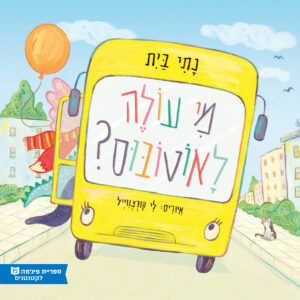 Who Gets on the Bus?
Who Gets on the Bus?  One of These Is Not Like the Others
One of These Is Not Like the Others 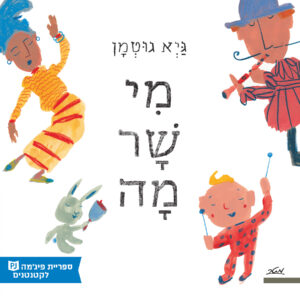 Who Sings What
Who Sings What 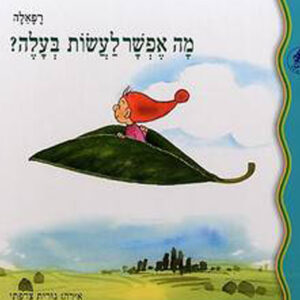 What can be done with a leaf?
What can be done with a leaf? 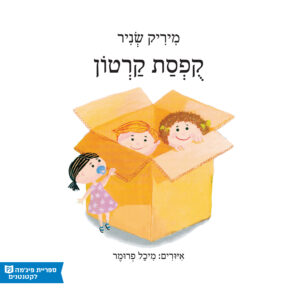 A Cardboard Box
A Cardboard Box 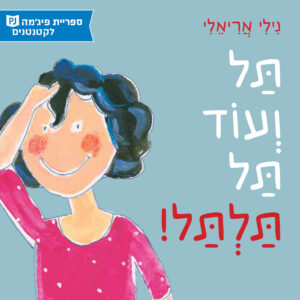 Tal and Tal
Tal and Tal 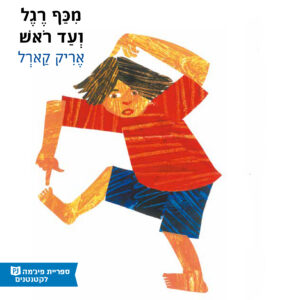 From Head to Toe
From Head to Toe 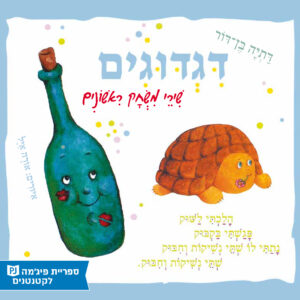 Tickles
Tickles 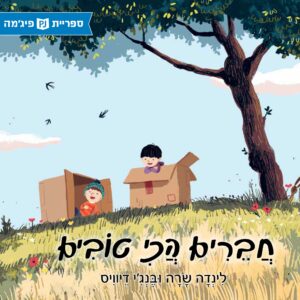 Best Friends
Best Friends 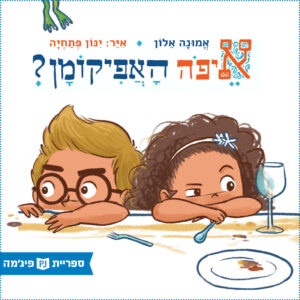 Where is the Afikomen?
Where is the Afikomen? 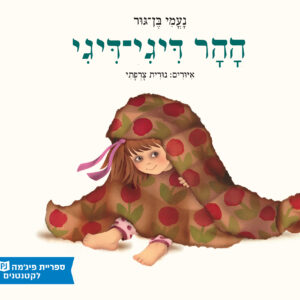 The Hill Tickle-Tickle
The Hill Tickle-Tickle 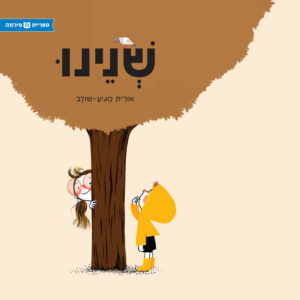 The Two of Us
The Two of Us 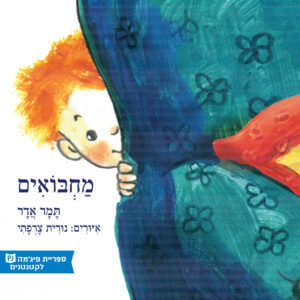 Hide & Seek
Hide & Seek 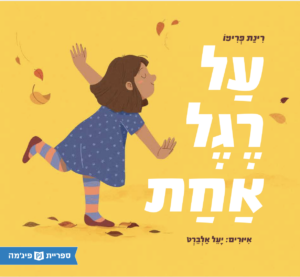 On One Foot
On One Foot 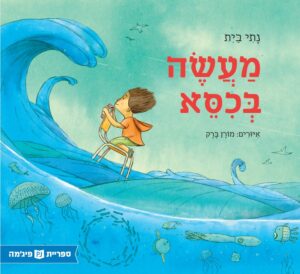 About a Chair
About a Chair 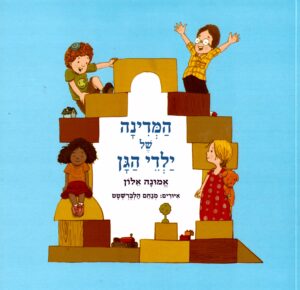 Land of Preschool Children
Land of Preschool Children 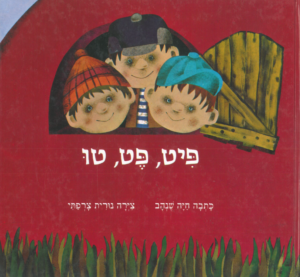 Pit, Pet, Tu (“Chit, Chat, Chatter”)
Pit, Pet, Tu (“Chit, Chat, Chatter”) 








